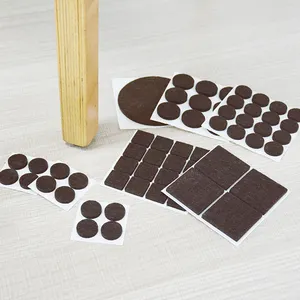
All categories
Featured selections
Trade Assurance
Buyer Central
Help Center
Get the app
Become a supplier

(11267 products available)




















































furniture soft pads are essential components in the furniture industry, designed to protect surfaces and enhance the longevity of furniture pieces. They are typically small, padded items placed under furniture legs or bases to prevent damage to floors and reduce noise when moving furniture. furniture soft pads come in various shapes, sizes, and materials, catering to different types of furniture and flooring. Their primary purpose is to safeguard both the furniture and the floor, ensuring that both remain in excellent condition over time. As furniture evolves in design and material, so too do furniture soft pads, adapting to meet the specific needs of modern furnishings.
The variety of furniture soft pads available in the market is extensive, each designed for specific applications and furniture types. Common types include felt pads, rubber pads, and plastic glides. Felt pads are popular due to their soft texture, making them ideal for hardwood floors as they prevent scratches and scuffs. Rubber pads offer excellent grip and are often used for furniture on tile or laminate floors to prevent slipping. Plastic glides are typically used for outdoor furniture, providing durability and resistance to weather elements. Each type of furniture soft pads serves a unique purpose, ensuring optimal protection and functionality for the furniture and flooring involved.
furniture soft pads provide several key functions that make them indispensable in furniture maintenance. They serve as a protective barrier between the furniture and the floor, preventing damage such as scratches, dents, and scuff marks. Additionally, furniture soft pads reduce noise generated by furniture movement, contributing to a quieter and more pleasant environment. Some furniture pads come with adhesive backing for easy application, while others are designed to fit snugly onto furniture legs without additional attachment methods. The versatility of furniture soft pads allows them to be used with various furniture types, from chairs and tables to larger items like sofas and cabinets.
The construction of furniture soft pads involves a range of materials, each selected for its specific properties and suitability for different flooring types. Felt is a common material, known for its softness and ability to prevent scratches on hardwood floors. Rubber is chosen for its non-slip properties, making it ideal for use on slick surfaces such as tiles. Plastic materials are often used for outdoor furniture pads due to their durability and resistance to moisture and UV rays. The choice of material impacts the effectiveness of furniture soft pads in protecting floors and ensuring furniture stability, allowing manufacturers to tailor products to meet specific requirements.
To maximize the benefits of furniture soft pads, it's important to choose the right type for your specific needs. Consider the furniture type and the flooring material when selecting pads to ensure compatibility and optimal protection. Ensure that furniture soft pads are properly attached to the furniture legs, either through adhesive backing or by fitting them securely onto the furniture base. Regularly inspect and replace worn or damaged pads to maintain their protective qualities. Additionally, using furniture soft pads in combination with furniture coasters or sliders can facilitate easier movement of heavy items, reducing strain and potential damage to floors. Proper maintenance and application of furniture pads can significantly enhance the lifespan of both furniture and flooring.
When selecting furniture soft pads, it's crucial to consider the specific needs of your furniture and flooring. Begin by assessing the material compatibility; for example, felt pads are ideal for hardwood floors, while rubber pads suit tile or laminate surfaces. The shape and size of furniture soft pads also matter, as they should fit snugly under furniture legs to provide adequate protection. Additionally, consider the weight and movement of your furniture. Heavier pieces may require thicker or more robust pads to prevent wear and tear on both the furniture and the floor. By carefully evaluating these factors, you can choose furniture soft pads that best suit your requirements and ensure lasting protection.
Proper installation of furniture soft pads is essential for their effectiveness. Start by cleaning the furniture legs and the area where the pads will be placed to ensure a secure attachment. Some pads come with adhesive backing, making them easy to apply, while others may need to be secured with screws or nails. Ensure that furniture soft pads are aligned correctly with the furniture legs to prevent uneven wear. Regularly check and adjust the pads to maintain their position, especially if the furniture is frequently moved. By following these installation tips, you can optimize the performance of furniture soft pads and extend the lifespan of your furniture and floors.
The choice of material for furniture soft pads depends on the type of flooring and furniture you have. Felt is great for hardwood floors, while rubber is better for non-slip surfaces like tiles. Consider the specific attributes of each material in relation to your needs.
Yes, certain furniture soft pads are designed specifically for outdoor use. Plastic or rubber pads are suitable for outdoor furniture as they resist moisture and UV rays, offering durable protection in various weather conditions.
The lifespan of furniture soft pads can vary based on usage and environmental factors. Regular inspection for wear and tear is advised. Replace them when they show signs of damage or when they no longer provide adequate protection.
Adhesive-backed furniture soft pads can be effective if applied correctly. Ensure the surface is clean before application for maximum adhesion. However, for heavier furniture, consider additional securing methods like screws for enhanced reliability.
Properly installed furniture soft pads should not affect stability. In fact, they can enhance stability by preventing slippage. Choose pads that fit well and are appropriate for the weight and movement of your furniture to maintain stability.